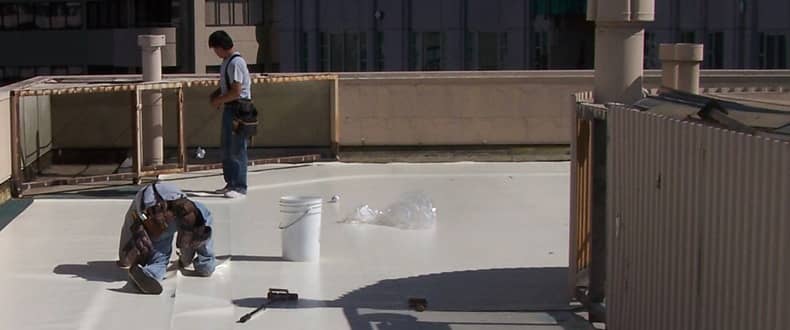I’ve done and seen more than my fair share of welding over the past 40 years. And in that time the materials and welding technology have changed significantly. There were also a number of lessons learned along the way. For the old-timers out there, how many of you remember manufacturers saying these new thermoplastic materials could be welded “straight through water”?
In the early 1970s I learned how to solvent weld PVC membranes. At the time, this was a totally foreign concept and process to me since I had been raised installing built-up roof (BUR) membranes. Fortunately, the welding process saw advancements in the late 1970s and early 1980s, most notably moving away from the use of tetrahydrofuran (THF), a fairly toxic and highly flammable solvent, to hot air. The hot air welding process was ushered in with the introduction of automatic hot air welders. However, the equipment we were using was a technology transfer from the linoleum industry. It was effective, but more often than not the automatic welders had to be run on strips of sheet metal so they didn’t create seam wrinkles. And if we were welding six feet a minute we were “flying.”
Today’s technology has improved the automated process 100 times over. But even with the technology advancements, some aspects of the process have not changed since the early days. The following are a few tips that will go a long way toward ensuring quality and efficiency when welding thermoplastics.
- The first principle of roofing is that all materials need to be kept dry. Moisture is the enemy of any roof system and proper storage of thermoplastic membranes can be the make-or-break factor when it comes to welding the materials together.
- The laps need to be clean. Dirt will impair the quality of the weld by creating a barrier between the polymers. Cleaning the laps may take a little time but it’s well worth the effort and ensures a quality welding process. All manufacturers either offer or recommend specific cleaning solvents for thermoplastic membranes.
- Training cannot be overlooked. This training needs to come from the manufacturer of the particular membrane. To assume that all thermoplastic membranes are alike can be a costly mistake. Their individual chemistries are unique to the individual product and understanding their nuances can be the difference between a poor and great experience for the owner as well as the crew.
- It’s not how fast you weld, it’s how well you weld fast. Welding fast is ineffective and unnecessary. Welding the membrane is one of—if not the—most critical processes done on the roof. It makes little sense to rush the welding process. I hear reports of individuals welding at 15 feet a minute and higher. Then people wonder when there are reports of poor seams. The fallback explanation is always that the seam issue must be the result of a membrane problem. Just because an automatic welder can go fast doesn’t mean you need to run it flat out. Too often this is just poor training and individuals going through the motions.
- Test welds can save a lot of rework. Too often contractors think this takes too much time, but dialing in the automatic welder daily or after significant temperature changes during the day can actually save money that would be spent on reworking or stripping bad seams.
- You can’t probe your way to quality. Running a probe down a seam to find imperfections in the welds is an after-the-fact process and an attempt to inspect your way to quality. Every void, regardless of reason, has a cost associated with its repair.
In addition to the above, general safety precautions, consistent and proper power sources as well as equipment maintenance are also factors that have to be addressed daily to ensure safe, effective and high-quality rooftop welding operations.
I had a superintendent once whose motto was, “hurry up and get it done so we have time to come back and fix it later.” This mentality costs contractors money and destroys an owner’s perception of quality when the finished roof is all patched up due to ineffective welding practices. My welding days are about over, but I can sum it all up with a lesson learned long ago. DIRFT: Just do it right the first time.
-1.png?width=500&height=271&name=FiberTite_Only%20(500px%20wide)-1.png)



-1.png)